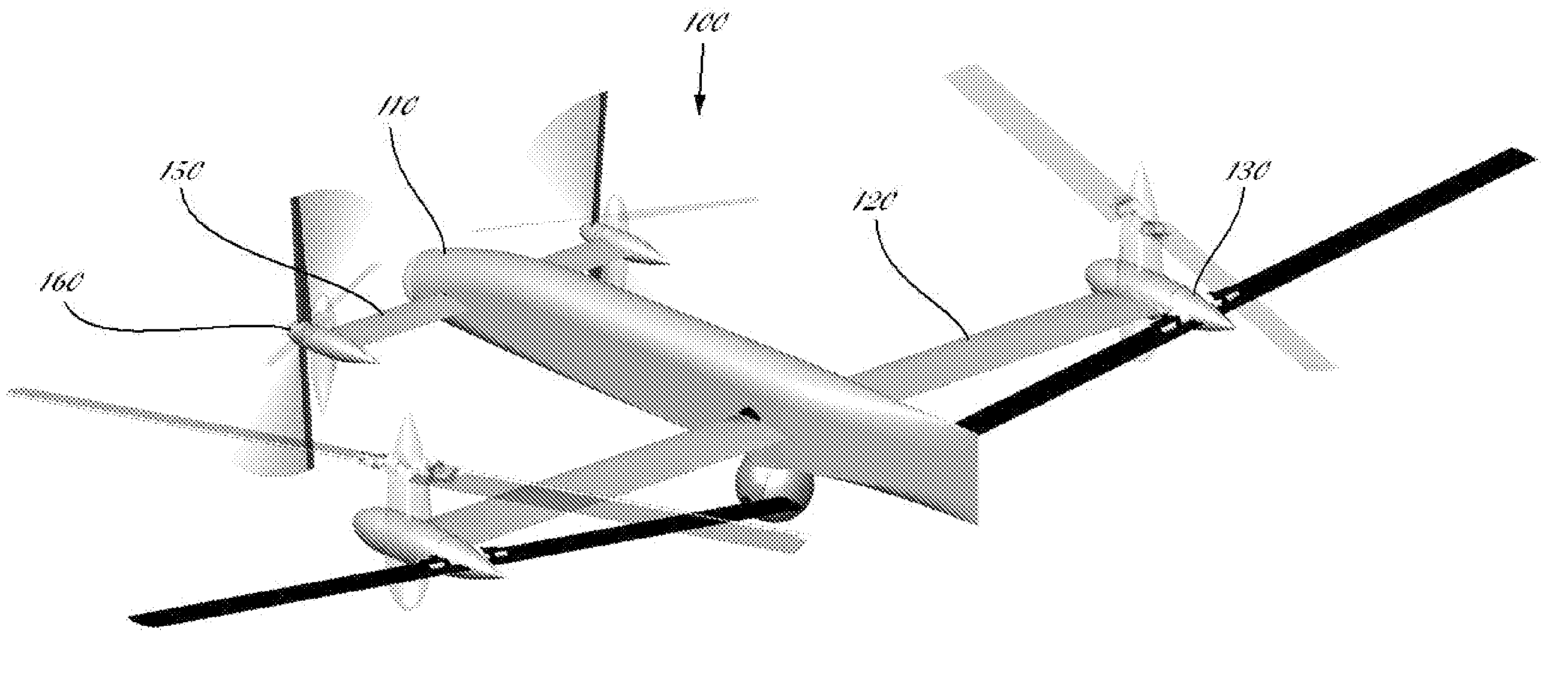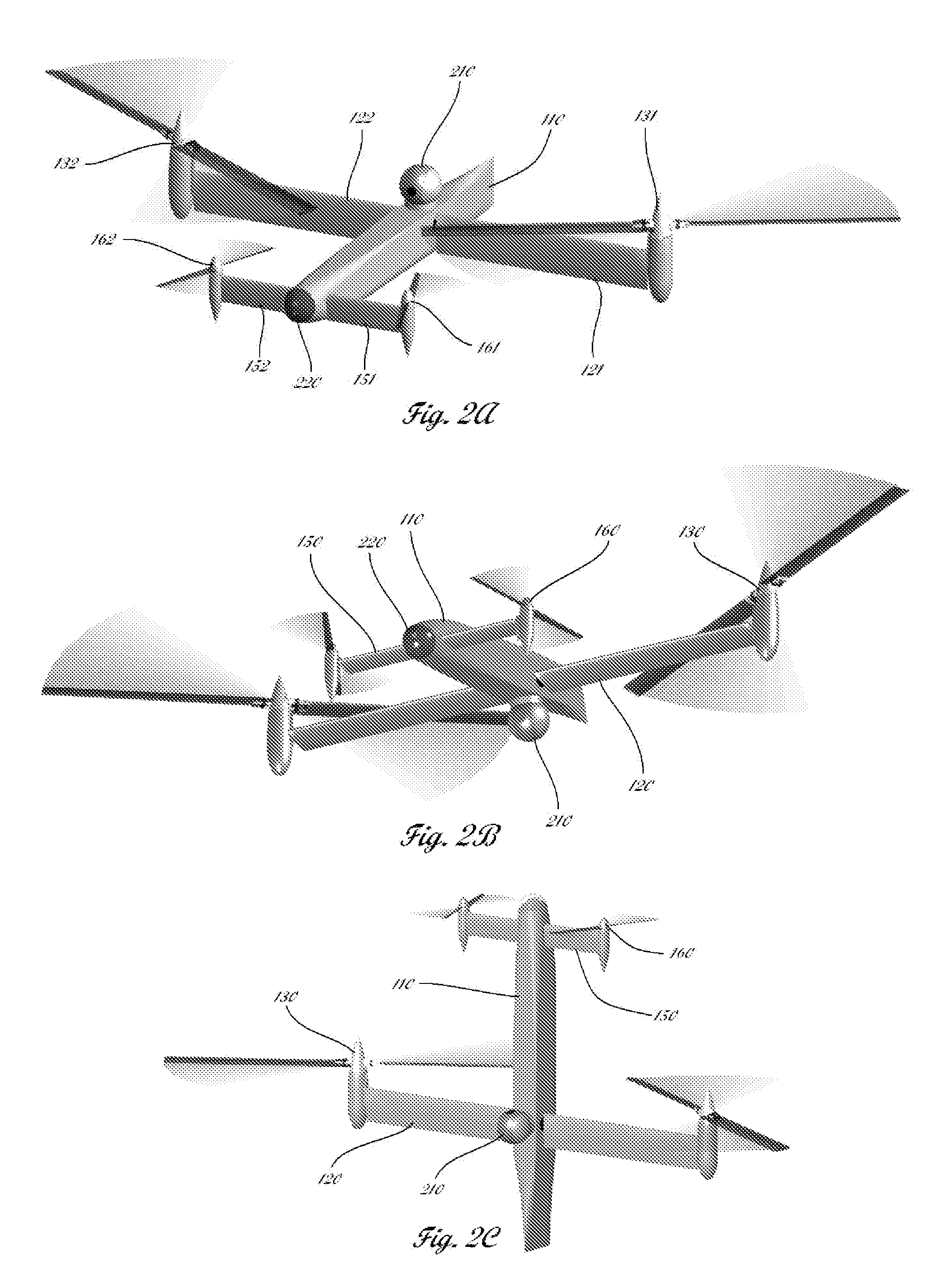Quad tilt rotor aerial vehicle with stoppable rotors
a technology of stoppable rotors and quadrotors, which is applied in the direction of rotocraft, vertical landing/take-off aircraft, remote control aircraft, etc., can solve the problems of limiting the maximum speed of the aircraft, poor hover efficiency, excessive vibration, etc., and achieves the effect of increasing the vehicle maneuverability and fuselage attitude control, and increasing the aerodynamic efficiency of the vehicl
- Summary
- Abstract
- Description
- Claims
- Application Information
AI Technical Summary
Benefits of technology
Problems solved by technology
Method used
Image
Examples
Embodiment Construction
[0019]The exemplary aerial vehicle illustrated in FIGS. 1-3 is capable of vertical takeoff and landing, hover, and low speed flight with agile maneuvering while operating as a rotary wing aircraft, and efficient high-speed flight when operating as a fixed wing aircraft.
[0020]The vehicle 100 consists of a fuselage 110 with a pair of main wings 120 and tip mounted main rotors 130 attached to the central or aft section of the fuselage. To the front section of the fuselage is attached a pair of elevators 150 and propellers 160. In the preferred embodiment shown in FIGS. 1-4, the main wings 120 and main rotors 130 are significantly larger than the elevators 150 and propellers 160. However, rotors of equal size can be employed in other embodiments of the disclosed invention too.
[0021]The main rotors 130 and propellers 160 can be tilted from substantially vertical position for rotor-borne flight to substantially horizontal position for high speed wing-borne flight, as shown in FIG. 1. Duri...
PUM
 Login to View More
Login to View More Abstract
Description
Claims
Application Information
 Login to View More
Login to View More - R&D
- Intellectual Property
- Life Sciences
- Materials
- Tech Scout
- Unparalleled Data Quality
- Higher Quality Content
- 60% Fewer Hallucinations
Browse by: Latest US Patents, China's latest patents, Technical Efficacy Thesaurus, Application Domain, Technology Topic, Popular Technical Reports.
© 2025 PatSnap. All rights reserved.Legal|Privacy policy|Modern Slavery Act Transparency Statement|Sitemap|About US| Contact US: help@patsnap.com



